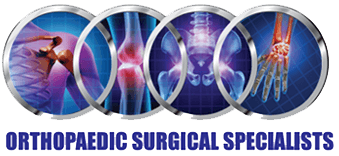Physical Medicine
Pain in the lower back and neck is a common health problem among a majority of individuals. Back and the neck pain often have a sudden onset and may last from a few days to several months. Depending on the cause, pain can be divided into two broad categories:
- Mechanical Pain: This is the most common cause of back and neck pain. It occurs due to injury to one of the spinal structures such as bones, ligaments, joints, discs and nerves.
- Non-mechanical Pain: This refers to pain secondary to an underlying pathology such as infection, tumor or diseases of the organs in the abdomen or chest.
In most cases, mechanical pain improves with conservative treatment. However, pain persisting beyond 4 to 6 weeks or leading to neurological dysfunction requires immediate medical intervention.
Physical therapy forms an important component of the conservative treatment. It is aimed at promoting healing and restoring movement and function of the injured region. It can be broadly classified into active and passive physical therapy. Active physical therapy includes stretching, strengthening and other exercises to relieve pain which may also include low impact aerobic conditioning exercises. Passive physical therapy comprises of other treatment modalities which can be administered to the patient, before or after the active therapy. Some of the common options under physical therapy include:
- Traction: This is applied to the spine and neck by various techniques. Accu-Spina is a mechanized traction system that creates a negative pressure inside the degenerated disc space, helping to relieve the pressure over the neural foramen. It is used to relieve chronic back pain and neck pain secondary to spinal stenosis, degenerative disc disease, herniated disc and sciatica.
- Massage: This can be performed by the therapist’s hands or with special massage tools to rub or stroke the area. Massage increases blood flow to the area, delivering more oxygen and nutrients as well as promoting healing by improving transport of waste products from the cells. Massage is effective in reducing spasms, pain and stiffness in the muscles of the spine and neck.
Myofascial release is a special type of massage to relax the fascia and tense muscles. Fascia is the soft tissue covering the muscles and bones. Poor posture or damage can lead to tightening of the fascia causing pain and stiffness. - Heat and cold therapy: Cold pack is applied to an injured site in the first 48 hours followed by a hot pack to relieve pain. Cold therapy slows the blood circulation and reduces swelling whereas heat therapy increases the blood flow and improves the supply of oxygen and nutrients as well as the removal of waste products from the cells. Moist heat is used to relieve pain due to muscle spasm and strain.
- Ultrasound: A hot pack cannot deliver heat to the deeper body tissues. Ultrasound therapy delivers heat to the deeper tissues of the body in the form of ultrasound waves, transmitted through a probe. Heating improves the blood flow and repair of the affected area.
- Transcutaneous Electrical Nerve Stimulation (TENS) therapy: A special device is placed on the skin over the area of the pain as a surface patch. The TENs unit transmits low voltage electrical impulses that block the transmission of pain signals to the brain. It may also relive pain by the stimulation of endorphins production (natural pain killers) in the body.
- Braces: These provide extra support to the injured region and promote healing by restriction of motion.
 Patient Portal
Patient Portal Patient Forms
Patient Forms New Patient Appointment
New Patient Appointment












